Article menu:
- Prototypes of female characters in the epic novel “War and Peace”
- Lisa Bolkonskaya
- Helen Kuragina
- Natasha Rostova
- Countess of Rostov (senior)
- Vera Rostova
- Marya Bolkonskaya
- Anna Scherer
L.Tolstoy created a great picture, where he described the problems of war, as well as peace. Women’s images in the novel “War and Peace” reveal the inner side of social vicissitudes. There is a global war – when peoples and countries are at war, there are local wars – in the family and within a person. The same is true of the world: peace is made between states and emperors. People come to the world in personal relationships, a person comes to the world, trying to resolve internal conflicts and contradictions.
Prototypes of female characters in the epic novel “War and Peace”
Leo Tolstoy was inspired by the people who surrounded him in everyday life. There are other examples from the biographies of writers, which indicate that the authors, when creating a work, borrow traits for book characters from real personalities.
For example, Marcel Proust, a French writer, did this. His characters are a synthesis of traits that people from the author’s environment possessed. In the case of L. Tolstoy, the female images in the epic “War and Peace” are also written out, thanks to the appeal to women from the writer’s social circle. Here are some examples: the character of Maria Bolkonskaya, the sister of Andrei Bolkonsky, was created by L. Tolstoy, inspired by the personality of Maria Volkonskaya (the writer’s mother). Another, no less lively and vivid female character, Countess Rostova (eldest), is written off from the author’s grandmother, Pelageya Tolstaya.
However, some characters have several prototypes at the same time: Natasha Rostova, already familiar to us, for example, as a literary hero, has common features with the writer’s wife, Sophia Andreevna Tolstaya, and Sophia’s sister, Tatyana Andreevna Kuzminskaya. The fact that the prototypes of these characters were close relatives of the writer explains the warmth and tenderness of the author towards the characters he creates.
Leo Tolstoy showed himself to be a subtle psychologist and connoisseur of human souls. The writer equally well understands the pain of young Natasha Rostova when the girl’s doll breaks, but also the pain of a mature woman – Natalya Rostova (the eldest), who is experiencing the death of her son.
The title of the novel says that the writer constantly refers to contrasts and oppositions: war and peace, good and evil, masculine and feminine. It seems to the reader (because of stereotypes) that war is a man’s business, and home and peace, respectively, are a woman’s business. But Lev Nikolaevich demonstrates that this is not so. For example, Princess Bolkonskaya shows courage and courage when she defends the family estate from the enemy and buries her father.
Note that the division of characters into positive and negative is also built on the contrast. However, the negative characters remain endowed with negative traits throughout the novel, while the positive characters undergo internal struggles. The writer calls this struggle a spiritual quest, and shows that positive heroes come to spiritual growth through hesitations, doubts, pangs of conscience … They have a difficult path ahead.
Let us dwell in more detail on the characteristics of young Natasha and Countess Rostova, as well as on the figure of Maria Bolkonskaya. But before that, let’s briefly turn to the image of Andrei Bolkonsky’s wife.
Lisa Bolkonskaya
Liza is a character who balanced the gloominess and depressiveness inherent in Prince Andrei. In society, Andrei was perceived as a closed and silent person. Even the appearance of the prince hinted at this: the dryness and elongation of features, a heavy look. His wife had a different appearance: a lively princess, of short stature, who constantly fussed and minced with small steps. With her death, Andrei lost his balance and a new stage of the spiritual search for the prince began.
Helen Kuragina
Helen – Anatole’s sister, written out as a depraved, selfish character. Kuragina is interested in entertainment, she is young, narcissistic and windy. However, she is frivolous and does not show patriotic feelings, continuing to lead her usual way of life in Moscow captured by Napoleon’s troops. Helen’s fate is tragic. An additional tragedy in her life is the fact that she has not managed to break out of the vicious circle of low morality.
Natasha Rostova
The younger Rostova is, of course, one of the central female characters. Natasha is beautiful and sweet, at first she is characterized by naivety and windiness. Prince Andrei, having fallen in love with her, understands that between them there is an abyss of life experience. This thought of the prince is justified when Natasha succumbs to a fleeting passion for Anatole Kuragin.
It may be interesting for the reader to observe how the image of Natasha changes: at first – a small, lively, funny and romantic girl. Then – at the ball – the reader sees her as a blossoming girl. Finally, during the retreat from Moscow, Natasha shows her patriotism, sympathy and compassion. Maturity awakens in Rostova when she takes care of the dying Andrei Bolkonsky. In the end, Natasha becomes a wise and loving wife and mother, although she loses some of her former beauty.
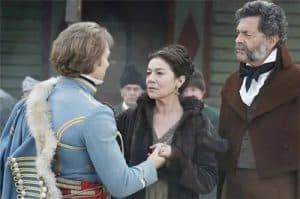
Natasha is no stranger to mistakes: this is her passion for Kuragin. Spiritual improvement and deepening of the inner world is connected with Natasha’s relationship with Prince Andrei. Calmness and harmony come to the heroine when she marries Pierre Bezukhov.
Natasha is characterized by empathy and mercy. The girl feels the pain of people, sincerely tries to help those who need help. During the war, Natasha realizes that material values are nothing compared to human life. Therefore, she donates the acquired family property in order to save the wounded soldiers. The girl throws things from the wagon and transports people in this way.
Natasha is beautiful. However, her beauty does not come from physical data (of course, also outstanding), but from sincerity and inner peace. The moral beauty of Rostova is a bud, which at the end of the novel turns into a rose.
Countess of Rostov (senior)
Countess Natalya, like a mother, tries to appear strict and serious. But she shows herself to be a loving mother who only pretends to be angry and annoyed at the excessive sentimentality of the children.
Countess Rostova depends on the rules accepted in society. Breaking these rules is awkward and difficult for her, but Natalya does it if close relatives or friends need help. For example, when Annette, her friend, found herself in a difficult situation, the countess, embarrassed, asked her to accept the money – it was a sign of attention and help.
In general, this: we suggest that you familiarize yourself with the images of Napoleon and Kutuzov” in Leo Tolstoy’s novel “War and Peace”
The countess brings up children in freedom and liberty, but this is only an appearance: in fact, Natalya cares about the future of her sons and daughters. She doesn’t want her son to marry a dowry. The eldest Rostova is doing everything to terminate the emerging relationship between her youngest daughter and Boris. Thus, a strong feeling of maternal love is one of the main qualities of Countess Rostova.
Vera Rostova
Sister of Natasha Rostova. In Lev Nikolaevich’s narration, this image is always in the shadows. However, Vera did not inherit the smile that adorned Natasha’s face, and therefore, Lev Nikolayevich notes, the girl’s face seemed unpleasant.
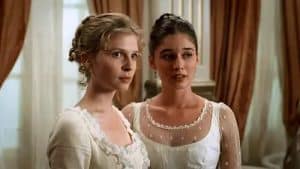
Vera is described as of a selfish nature: the eldest Rostova does not like her brothers and sister, they annoy her. Faith loves only herself. The girl marries Colonel Berg, who was similar in character to her.
Marya Bolkonskaya
Andrei Bolkonsky’s sister is a strong character. The girl lives in the village, all her steps are controlled by an evil and cruel father. The book describes a situation where Marya, wanting to look beautiful, puts on make-up and dresses up in a masaka-colored dress. The father is dissatisfied with her outfit, expressing despotism towards his daughter.
Dear readers! We offer you to get acquainted with the summary of the story “Youth” by Leo Tolstoy.
Marya is an ugly, sad, but deeply thinking and intelligent girl. The princess is inherently insecure and stiff: her father always says that she is not good-looking and is unlikely to marry. What draws attention to Marya’s face are large, radiant and deep eyes.
Marya is the opposite of Vera. Altruism, courage and patriotism, as well as responsibility and fortitude distinguish this woman from War and Peace. In the female images of the novel “War and Peace” there is something in common – they are strong personalities.
Princess Bolkonskaya initially rejects Rostova (younger), but after the loss of her father and brother, the princess’s attitude towards Natasha changes. Marya forgives Natasha for breaking Andrei’s heart by being carried away by Anatole Kuragin.
The princess dreams of happiness, family and children. Having fallen in love with Anatole Kuragin, the girl refuses the vile young man, because she feels sorry for Madame Bourien. So, Marya expresses the nobility of character and sympathy for people.
Later, Marya meets Nikolai Rostov. This connection is beneficial for both: Nikolai, having married the princess, helps the family with money, because the Rostovs lost a fair share of their fortune during the war. Marya sees in Nicholas salvation from the burden of a lonely life.
Anna Scherer
A high-society lady who embodies the falsehood and hypocrisy often found in salons.
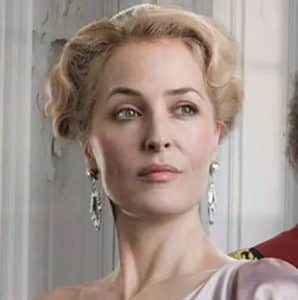
Thus, Leo Tolstoy depicts both good and bad female images in the epic “War and Peace”, making the work a separate world.
Composition Women’s images in the novel “War and Peace”
The author of the work “War and Peace” created diverse female images. Tolstoy showed every life of heroines and how women influence men. Throughout the novel, the lives of women changed. The heroine Natasha Rostova is described in a vivid way. Natasha fascinated people with her sincerity, a natural and cheerful girl, and the spiritual growth and changes of the heroine are also visible in the work. The girl has a kind soul and is overflowing with love, which is enough for her life. Natalia directs the lives of those around her in a positive direction and does not even know about it herself. Surrounding people admire the fact that even in a difficult fate the girl does not lose her easy character and faith in happiness, Natasha devoted her own life to love for her family.
Marya Bolkonskaya is also the main character of the work. Marya is a calm, wealthy and enviable bride who does not like to attend social events. The heroine was brought up in strictness, the girl’s childhood passed in constant teachings. Father Prince Bolkonsky treated the girl strictly, and demanded obedience. Anatole Kuragin came to Marya Bolkonskaya to woo, such an act overwhelms the girl with happiness, because she had hope. Although Marya is very familiar with the groom, Anatole seemed an attractive and intelligent man. But then the man will reveal himself to Marya as a selfish and cynical person. The main feature of the heroine is inner strength and spirituality. After the advance of the French army, Marya proudly refuses the enemy general and leaves home. Marya takes the reins of power and begins to properly handle them. At the end of the work, Marya Bolkonskaya finds her own female happiness.
Helen Kuragina is the embodiment of grace and femininity, the girl is attractive in appearance, but at the same time not soulless. The heroine devoted her own life to constant trips to social events. Helen married the naive Pierre, but throughout her married life the girl did not cheat on Pierre. When the man found out about the betrayal, he went to a duel with Dolokhov. Pierre quickly fell out of love with Helen because of such shame and decided to leave for the French army. At the end of the work, another lover awarded Helen Kuragina with a disease due to which she died.
Tolstoy managed to convey those subtle psychological nuances of human relationships that make up our lives. The author treats some female characters with awe, love and respect, and also ruthlessly and clearly shows the immorality and falsity of others.
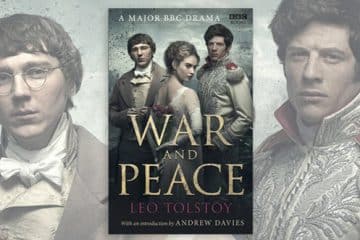
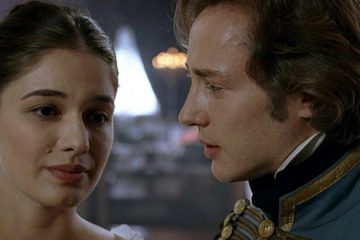
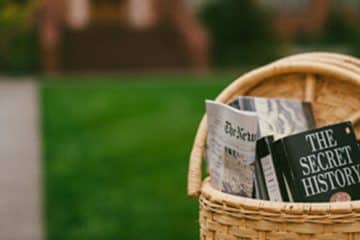


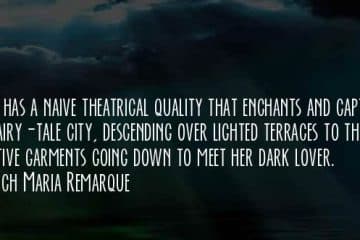
I have always admired the majesty and beauty of this work. Gigantic in its scope, the novel simply floats through the drinking and problems of the lives of ordinary people, how they acted and how they were devoted to their passions. In the end, the writer built architecture and a complex cascade of interactions between people who are alive (after all, Tolstoy took the images from real prototypes). Accordingly, this is what they would do if they found themselves in this situation. Thank you for such a valuable and succinct review of female characters, very conceptual and to the point.